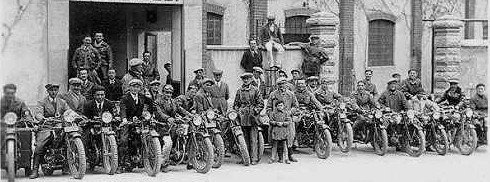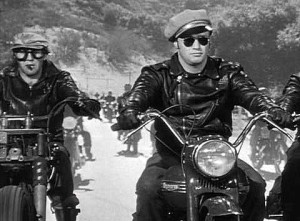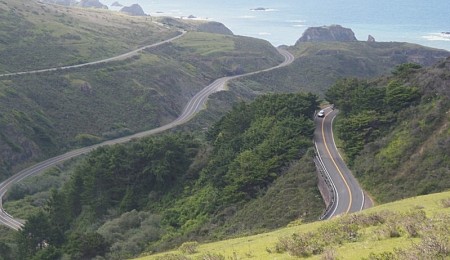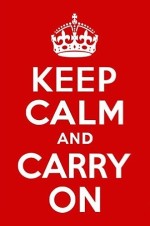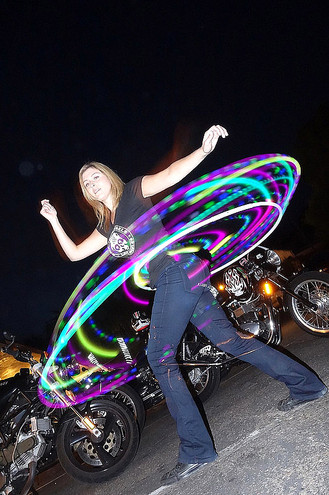
Guidelines
Ride Rules
We ride as a group at Cambria so basic group riding rules apply. If you choose not to follow these rules, then please ride apart from the group and on your own. A smooth, safe ride depends on everyone riding responsibly and following a few simple guidelines. The first rule goes without saying: No CrAsHiNg!
1 Ride your own ride. Do not push yourself beyond what you’re comfortable with. If you feel some fear kicking in and it feels like you’re going too fast, you probably are. Just slow down. The sweep will not pass you, so you’re fine. It’s not a race…
2 Follow the leader. The leader is not only going to be our most capable & trusted rider, they’re also responsible for knowing the route and the hazards associated with it. If they feel that 60 MPH in a corner is fast enough, then it is. Don’t dis the leader, his judgment or experience by passing or questioning him.
3 Stay tight. When the pack stays tight, cagers are forced to treat us as one large vehicle instead of a bunch of small ones. They’re less likely to cut into the pack, cut us off, break our visual contact with each other or cause separation and a hazardous situation. Keeping the pack tight does not mean tailgating.
4 Know how to ride. You’re responsible for learning, understanding and mastering proper riding skills. If it’s obvious to the rest of the group that your riding ability is poor and creates a hazard for the rest of us, you’ll be asked to ride apart from the pack. If you need resources to learn how to improve your riding skills, just ask.
5 Staggered in the straights. If we’re on a long, straight stretch of road or freeway, a staggered formation gives you more distance to stop and a way out while still keeping the overall length of the pack short.
6 Single file in the twisties. In the twisties, it’s safer and more efficient to follow the proper line through the corners. In order to track the proper line, you need to use the full width of the road.
7 Split lanes. We’re fortunate here in California that we can legally and safely split lanes. As a group, we may split as needed. If you have a problem with splitting lanes, we recommend you don’t ride with the pack, but instead choose to meet up with us at our destination in your own way. Here’s some tips on lane splitting which may or may not be the same as CHP guidelines:
i. Don’t go too fast. Usually a differential of no more than 15 MPH is safe.
ii. Don’t split if the surrounding traffic is going too fast. That’s usually more than 40 MPH.
iii. Always split lane number 1 & 2. That’s the fast lane and the lane next to it.
iv. If you can’t fit – don’t split. If in doubt whether you can fit between two vehicles, don’t do it!
v. Pass the ass. If a cager is obviously trying to block you from passing, move to lanes number 2 & 3 or 3 & 4 to split lanes. Then return to numbers 1 & 2 after you’re well past him.
vi. DO NOT pass on the shoulder. The shoulder has hazardous debris like glass, nails, car parts, tires, etc… which you don’t want to contend with. Plus shoulder riding is illegal.
vii. Don’t piss off a cager. Things like hitting windows or mirrors to “school” the motorist is illegal and can make it worse for the next rider.
viii. Expect the unexpected. That includes arms out windows, cigarette butts, opening doors, liquids, no turn signals, unexpected lane changes, etc...
ix. Avoid buses, trucks and motor homes. Their extra width and lack of visibility is a major liability. When it’s safe to pass them, do it quickly.
x. Be the sheepdog, not the sheep. When diving into traffic, don’t be a wimp and let cagers bully you. Take charge and ride like you mean it. Be defensive by being obvious, visible and a little aggressive. You want to be impossible to ignore.
8 Stay in formation. As an example, if you start out following the guy with the blue helmet – stay behind the guy with the blue helmet unless you have a good reason to pass. Moving around in the pack causes riders to have to shift and change their line to make room for you. It also makes us more conspicuous to cops. If you do have to pass, ALWAYS pass on the left, never on the right and always make sure the rider you’re passing is fully aware of your presence.
9 Keep going if... If a rider breaks down and you’re not the sweep, keep going so you can inform the ride leader at the next stop. The sweep will stop with the broken down rider.
10 Stop if... If a rider goes down, ALWAYS stop with the rider. Make sure they’re safely out of the road and deal with the situation, i.e.: first aid, traffic, 911, etc... Park your bike safely off the road.
11 Separated? If you get separated from the pack and aren’t sure which way to go, stop and wait for the sweep or the rest of the group to find you. The ride leader will make sure to stop or station people at important turns along the route. Also see rule numbers 3 & 17.
12 Be cool – not a tool. Don’t act like an ass by revving your engine, doing wheelies, burnouts, racing, flipping people off or other things which can draw unwanted attention to us from the public or LEO’s.
13 Maintain your bike. Owners of bikes which are spewing oil, always breaking down, losing parts or are a general hazard will be asked to ride apart from the pack.
14 Know your hand signals & pass them down.
- Foot or finger pointed to the ground = road hazard ahead
- Point to gas tank = stop for fuel
- Index finger pointed straight up = single file
- Tap the top of a helmet = cop ahead
- Open palm facing rearward = slow down
15 Wait at intersections. What this means?
i. If you go through a traffic light and it changes so that the riders behind you have to stop, pull off at the nearest safe place and wait for them.
ii. Don’t run stop signs.
iii. An exception to the above is if someone is blocking the intersection to allow riders to go through. It’s illegal, but for large group rides, it’s sometimes done to keep the pack safely together.
iv. Never take chances to beat a light at an intersection. Most motorcycle accidents occur at intersections and cagers do not see you. Making that light isn’t worth your life.
16 Fuel up. Show up to the ride with a full tank of gas. When the group stops for gas, you gas up too. The ride leader may plan to go farther than you expect.
17 Communicate. If possible, get the leader & sweep’s cell number. If you need to break away from the group, or use the restroom, or if you become separated, communicate this to the ride leader.
18 Obey the law when you can. Motorcyclists typically are targets for LEO’s (Law Enforcement Officers) and some will find any excuse to pull you over and hassle you. While we may not always follow the letter of the law, please try and obey the law as much as practical. That means coming to a full stop, using turn signals, not speeding through small towns & school zones. Be courteous...
19 Respect other riders. We have to share the road with a wide variety of riders. Sometimes hardcore bikers and M/C members. Sometimes weekend racers. Sometimes commuters or even scooterists. Don’t be a dick to anyone else who is riding simply because they don’t ride what you do or ride like you do. Show respect so that we may receive respect in return.
Road & Weather Conditions
The road & weather conditions in the Cambria, Paso Robles, Santa Maria, Morro Bay and Big Sur area vary widely.
- Pacific Coast Highway (PCH or Highway 1) is almost always under construction at some point. Areas may be reduced to one lane or have directed traffic, often with pilot cars. The road surface in these construction areas may be extremely rough, covered with gravel, off-camber or not paved at all. Fair warning...
- Temperatures can be cold, especially with high humidity, you will need to dress warm along PCH, even in August. PCH often has morning fog, leaving the road damp and slippery. With the numerous sharp curves, rises, drops and off-camber turns, the water on the road can be really hazardous. The best way to deal with these hazards is to simply slow down. Make sure you follow the proper line through the corner. Start wide - end inside, not the other way around.
- Another problem on PCH are chains of slow moving vehicles. The vast majority of PCH is a double-yellow, no-passing zone. If you do choose to pass, do so at your own risk. There are also a lot of CHP that patrol PCH, so weigh those risks carefully. It's often better to just relax, enjoy the ride and scenery and get there safe, alive and without a ticket.
- The mountain roads between PCH and inland are very steep, infrequently traveled and can be quite technical. If you're not experienced with this type of road, try to follow the line and speed of a more experienced rider. As always, it's usually best to simply slow down. Watch out for sand on the road as well as scat and wildlife, such as deer, squirrels, etc...
- Once you're on the East side of the Santa Lucia Mountains, the temperature can warm up dramatically, often rising above 100 degrees. The group will usually stop at some point so riders can stow jackets, sweaters and cold weather gear, as well as drink some water.
- Some roads going through wine country and around vineyards drop to only one undivided narrow lane. Please try to keep to the right, even if you don't see traffic and be prepared to see oncoming cars and trucks on these narrow one-lane roads.
- Many turns in the rolling hills will have sand. We all hate sand. Slow down a little, pick a line around the sand and continue on.
- Enjoy the scenery and have fun!
